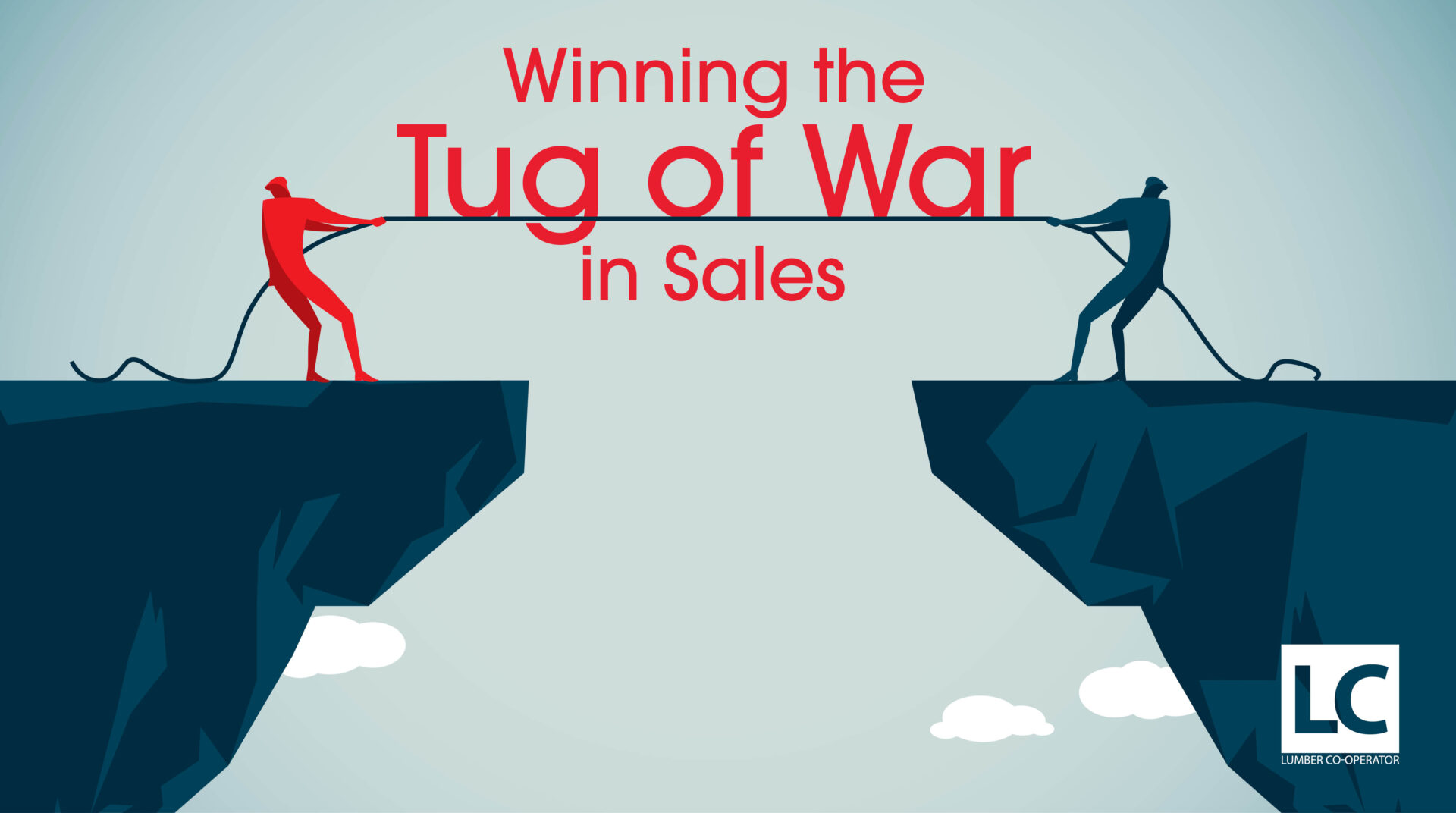Often, when speaking with a salesperson, evaluating a client’s business, or training a sales team, I refer to the schoolyard game of tug-of-war. Now, to set the stage for this analogy, this isn’t a win-lose situation where the “sales team” is on one side of the rope and they are battling the “customer team” on the other side of the rope. We all know that a win-lose situation with a customer (or even a vendor) is something to avoid. This tug-of-war analogy is actually a comparison of the differences between a winning sales strategy and a losing sales strategy.
In almost every game of tug-of-war, the teams that lose have one thing in common: They are just trying to hold on. “Just holding on” gets tiresome and mundane, and eventually, regardless of who’s at fault, something slips. Now that “slip” may represent a variety of situations, but when a little bit of rope is given to the other side, your business starts to slip away. I used to be surprised at how many salespeople, and businesses in general, are working hard and keeping busy, but they are just trying to serve the business that they already have (i.e., holding on). They might be able to hold on for quite a while. Maintaining a consistent workload and tension will aid in their ability to keep a grip on their business. However, external forces may be exerted on the situation, adding new pressure, and here again something slips, and either more business is lost or more effort is exerted just to keep what you already have.
On a personal note, I often wonder if just “holding on” is truly considered selling. Yes, your customers keep buying from you and keep giving you their business, likely because you or your company serves them well. Why did they start doing business with you in the first place? What was the catalyst that converted them from your competitor? What other business are you looking to gain, beyond the business that your customers already give you? If you are only servicing the same customers with a similar array of products from project to project, then the health of your business is predicated on the continuation of theirs. (This seems very scary…)
Conversely, on the other side of the rope, you will find the winning team. What is the winning team doing? They are systematically putting one hand in front of the other and are focused on “taking rope.” They have a clear goal, and little by little, they are taking rope that didn’t initially belong to them. This team on this side of the rope represents the best salespeople and businesses, and as they are taking rope, they are growing their business. Mistakes and slips may happen, but each length of rope that they take gives them some buffer from a mistake or a slip-up and also puts them that much closer to reaching their goals and driving sales growth for their business.
The amount of work and effort that each team puts into their business may be comparable. This doesn’t mean that one team, one business, or one salesperson is necessarily trying harder than another, working longer hours, or that they have better products or services to offer. It just means that they are deploying a sound strategy that is intent on gaining new business that they didn’t have when the game started.

What are the things that the winning teams do that you can incorporate to move beyond “holding on” and start setting a growth strategy and protecting the future in order to grow the business and start taking rope? Here are a few ways to start:
1. Be deliberate,and make growth initiatives the business’s focal point.
• Increase the visibility of growth initiatives and associated progress or challenges to the entire company.
2. Know where you are and commit some time each year, or at other varying intervals, to evaluate your current positions. Consider:
• How many customers do you serve today?
• What is the revenue and gross margin per customer?
• What product categories are you selling or not selling to your current customers?
• How many customers are buying new or innovative products from your business?
3. Know where you are going. How will your numbers look different 90 to 180 days from now?
• Set targets, so you can clearly define what progress and growth look like.
4. Decide what you are going to do to advance your progress toward these goals.
• Identify what you can do differently today to start making progress.
• Go out and take action to advance their business.
5. Tolerate failure, not complacency.
• Mistakes are going to happen, and not all new business is going to pan out. Accept that you will swing and miss, then use those opportunities to learn and adjust.
• Accepting that “we are too busy” and not taking effort toward growth is counterproductive and cements the business in its current state.
Tactically implementing growth-oriented activities can be worked into your daily regimen, and it doesn’t take a herculean effort. Consider the next time that you are on the phone or in a meeting with a current customer. Ask them if you can “introduce them to a new product that your company just brought in that you think they will want to see.” The odds are they will say yes, and now you are on your way to selling them something new.
One of my favorite stories from the field involves a top-performing dealer sales rep named Pete. Pete won all of his company’s contests for adding new customers and consistently grew his territory year after year. Pete would do one thing each week: drive up and down the streets of the residential neighborhoods that were near the jobsites of his current customers. Pete would note where there was an active jobsite (that he wasn’t supplying) and then set aside some time in the next few days to stop at those projects and introduce himself.
Is it really that simple? Yes, and no. There will be changes that need to be overcome, negotiations that need to be won, and naysayers that need to be convinced. Getting a customer to make a change is hard, whether the change is to a new product or a new supplier. Neither will happen if you don’t make the effort to put one hand over the next and plan to take some rope.
Want to read the full issue of the May LC? Click here
Want more insights on how help your customers recognize your value? Or take your company’s performance to the next gear? Tom Zimmerman, principal of SHIFT Sales Training & Consulting, has helped many companies better position themselves as valued-added partners for their customers, which has resulted in increased revenues and customer loyalty.







